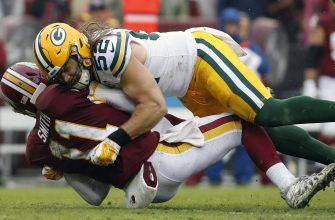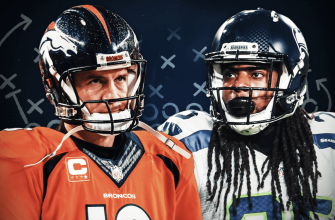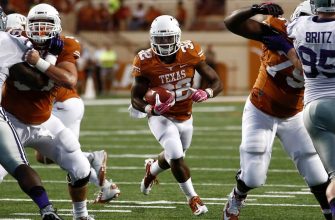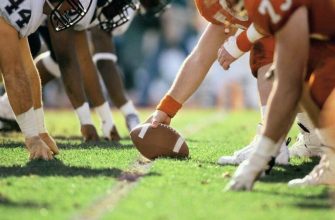A lateral pass, also known as a lateral or pitch, is an important part of football strategy where the ball is thrown parallel or backwards in relation to the offense’s movement down the field. Unlike a forward pass where the ball is thrown ahead, a lateral pass goes sideways or backwards to another offensive player.
The purpose of a lateral pass is to keep the play alive by getting the ball to a teammate who has more room to run with it. Lateral passes can enable big plays by moving the ball quickly across the field, avoiding defenders who have committed to tackling a specific player. It allows the offense to spread the defense horizontally to create openings for yardage gains. Laterals are an element of deception and misdirection in football, making it more difficult for the defense to track and stop the ball.
While risky, mastering the lateral pass opens up more strategic options for offenses, keeping defenses guessing and enabling explosive plays. The lateral is a key maneuver that transforms football from a collision sport into an elegant game of angles, positioning, and geometric precision. When executed well at the right time, a series of laterals can rapidly move the ball downfield for a touchdown in spectacular fashion.
When Lateral Passes are Used
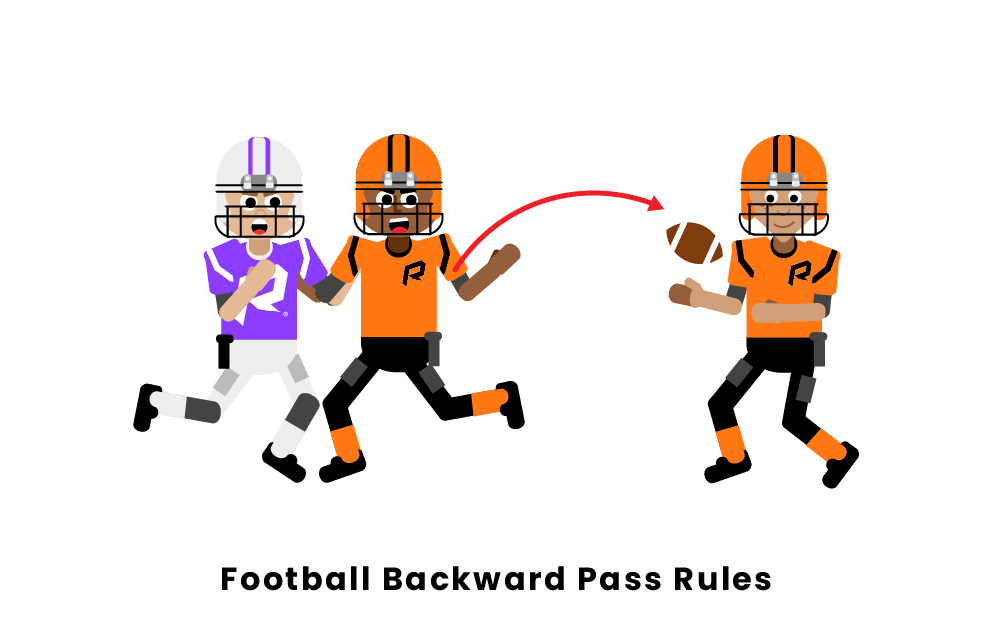
Lateral passes are used in specific situations in football when the offense needs to gain extra yards.
The most common times when lateral passes come into play are:
- After receptions – When a receiver catches the ball, they will often lateral the ball to another player if they see an opportunity to keep the play going and gain more yards. Lateral passes after receptions take advantage of the defense being out of position after the initial pass play.
- On trick plays – Coaches will design trick plays that utilize lateral passes to catch the defense off guard. These types of plays are high risk but can lead to big rewards if executed properly. A lateral pass on a trick play creates confusion for the defense and can lead to an unexpected ball carrier getting free in space.
- When the offense needs big yards late in a game – If a team is trailing late in the 4th quarter, they may turn to lateral passes in a desperate attempt to pick up big chunks of yards quickly. Lateral passes keep the play alive so multiple offensive players can get their hands on the ball and try to make something happen. The risk is worth the reward when the clock is winding down and the offense needs to score quickly.
So in summary, lateral pass plays require good timing and work best when the defense is caught off guard. Offensive coaches will specifically dial these plays up when they need explosive yards either through trickery or late in games when urgency calls for high risk/high reward play calls.
Famous Lateral Plays
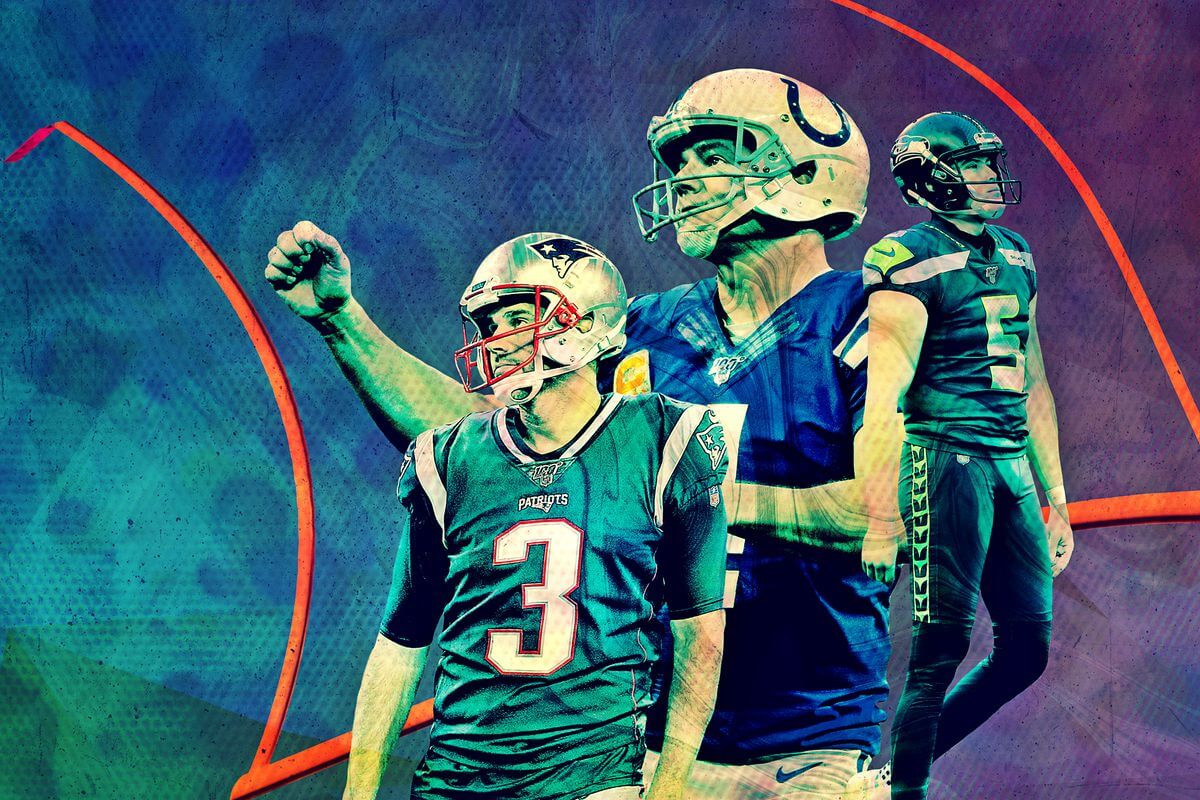
Some of the most memorable and dramatic moments in football have occurred thanks to the lateral pass. When executed properly in critical game situations, the lateral can lead to huge gains, stunning reversals, and unbelievable finishes. Here are some of the most famous lateral plays in football history:
The Play – Cal vs Stanford, 1982
This game-ending kickoff return featured not one but two miraculous laterals. With four seconds left and trailing Stanford by one point, Cal returned a squib kick all the way for a touchdown, first with a lateral from Kevin Moen to Richard Rodgers, and then another from Rodgers to Dwight Garner for the final score. The Play is regarded as one of the most memorable and controversial endings in college football. Cal’s improbable win is replayed every year during the Big Game rivalry.
Music City Miracle – Tennessee Titans vs Buffalo Bills, 2000 NFL Playoffs
Down by one with just 16 seconds left, the Titans ran a creative lateral play on the ensuing kickoff, with tight end Frank Wycheck throwing across the field to receiver Kevin Dyson, who went 75 yards down the sideline untouched for the shocking last-second touchdown. This thrilling lateral helped the Titans advance in the playoffs and is one of the NFL’s most famous game-winning trick plays.
Miami Hurricanes vs Duke Blue Devils, 2015
With just 6 seconds remaining, undefeated Miami miraculously scored on an 8-lateral kickoff return, with the final lateral resulting in a sprinting touchdown. Even though the play was ultimately called back due to an illegal block, this frantic last ditch lateral play was both exhilarating and controversial.
How to Execute a Lateral Pass
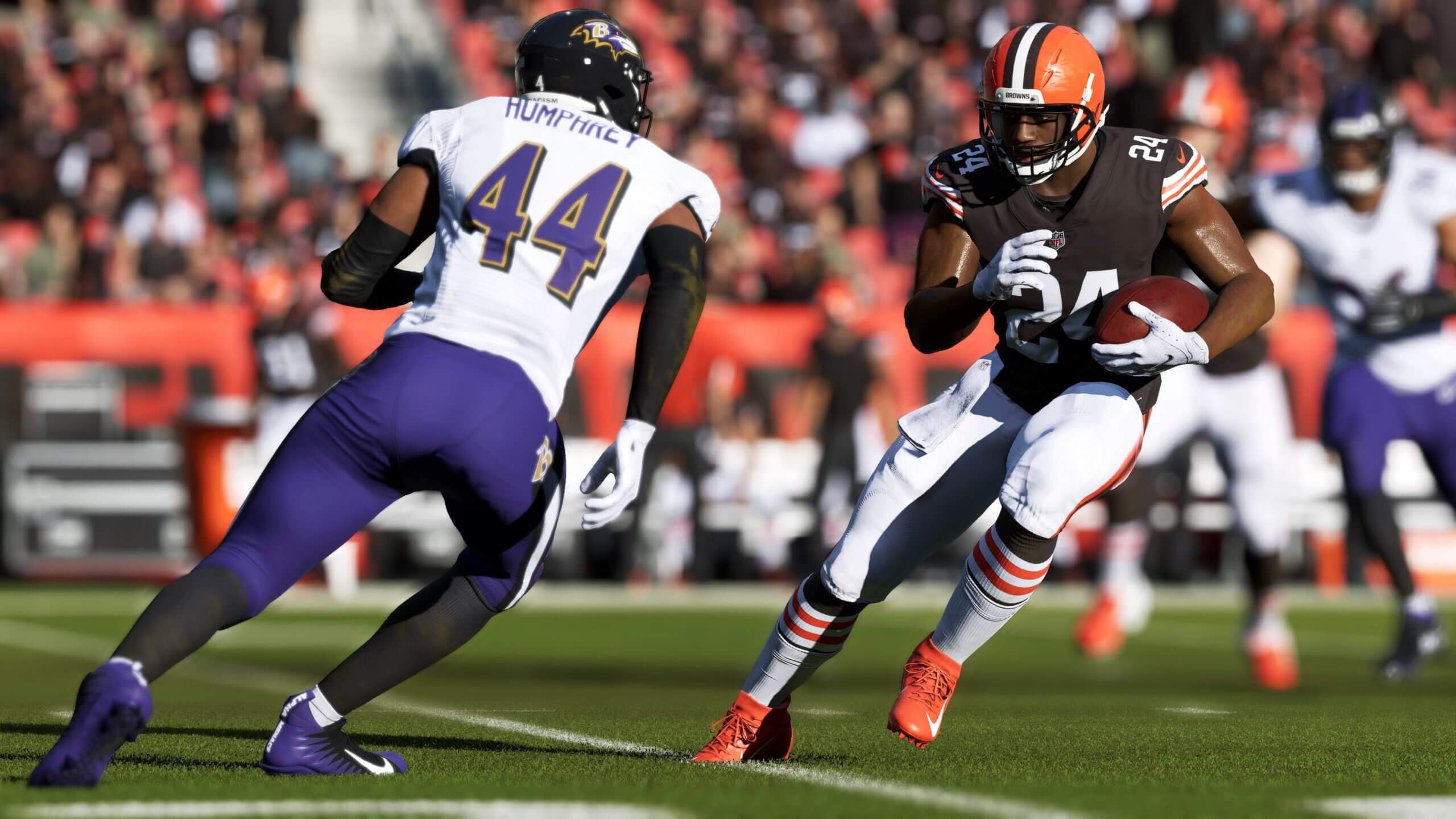
A lateral pass requires precise timing and technique to execute properly.
Here are some key tips for a clean lateral pass:
- Get in an athletic stance with knees bent, shoulders square, and feet staggered. This allows you to quickly move in any direction.
- Extend the ball out away from your body to make an easy target for the receiver. Hold the ball firmly with fingers spread wide across the laces.
- Keep your eyes up and focused on the receiver. Don’t stare at the ball or you may miss the exchange.
- Time the exchange by tossing the ball as the receiver passes you. Aim to hit the receiver in stride in their midsection.
- Put some zip on the pass, but don’t throw too hard. It’s a short lateral toss rather than a long bomb.
- Release the ball cleanly off your fingertips. Don’t push or float the ball to the receiver.
- Follow through fully extending your arm to get maximum power on the lateral.
- Keep your shoulders parallel to the line of scrimmage as you lateral to facilitate an easier catch.
- Call out “Lateral!” to alert your teammate and coordinate the exchange.
Proper lateral pass technique requires quick footwork, soft hands, and great timing between quarterback and receiver. Drills to practiceinclude quick ball exchanges hand-to-hand while moving and lateral relay races to work on timing. Executed correctly, the lateral pass opens up big play opportunities.
Rules and Regulations

The lateral pass is governed by specific NFL rules regarding backward and forward passes.
The main requirements for a legal lateral pass are:
- The ball must be thrown backwards or parallel to the line of scrimmage. Any pass thrown forward is an illegal forward pass resulting in a 5 yard penalty and loss of down.
- The passer’s entire body and the ball must be behind the line of scrimmage when released. If any part of the passer’s body is beyond the line of scrimmage when the ball is released, it is an illegal forward pass.
- After a change of team possession, no more than two forward passes can be made. A lateral pass does not count as a forward pass, so unlimited laterals are allowed after a change of possession.
- All players are eligible to catch a lateral pass, including offensive linemen. However, an ineligible receiver who catches a lateral that goes forward is penalized.
- The ball must be clearly backwards or laterally. If there is any question about whether the initial trajectory was forward, the pass is ruled an illegal forward pass.
- Defensive players can intercept lateral passes and gain possession. A muffed lateral pass is treated as a fumble.
Proper technique and timing are essential for a legal lateral pass. The rules aim to distinguish between backward passes and forward passes, and enforce restrictions on forward passing.
Risks and Rewards
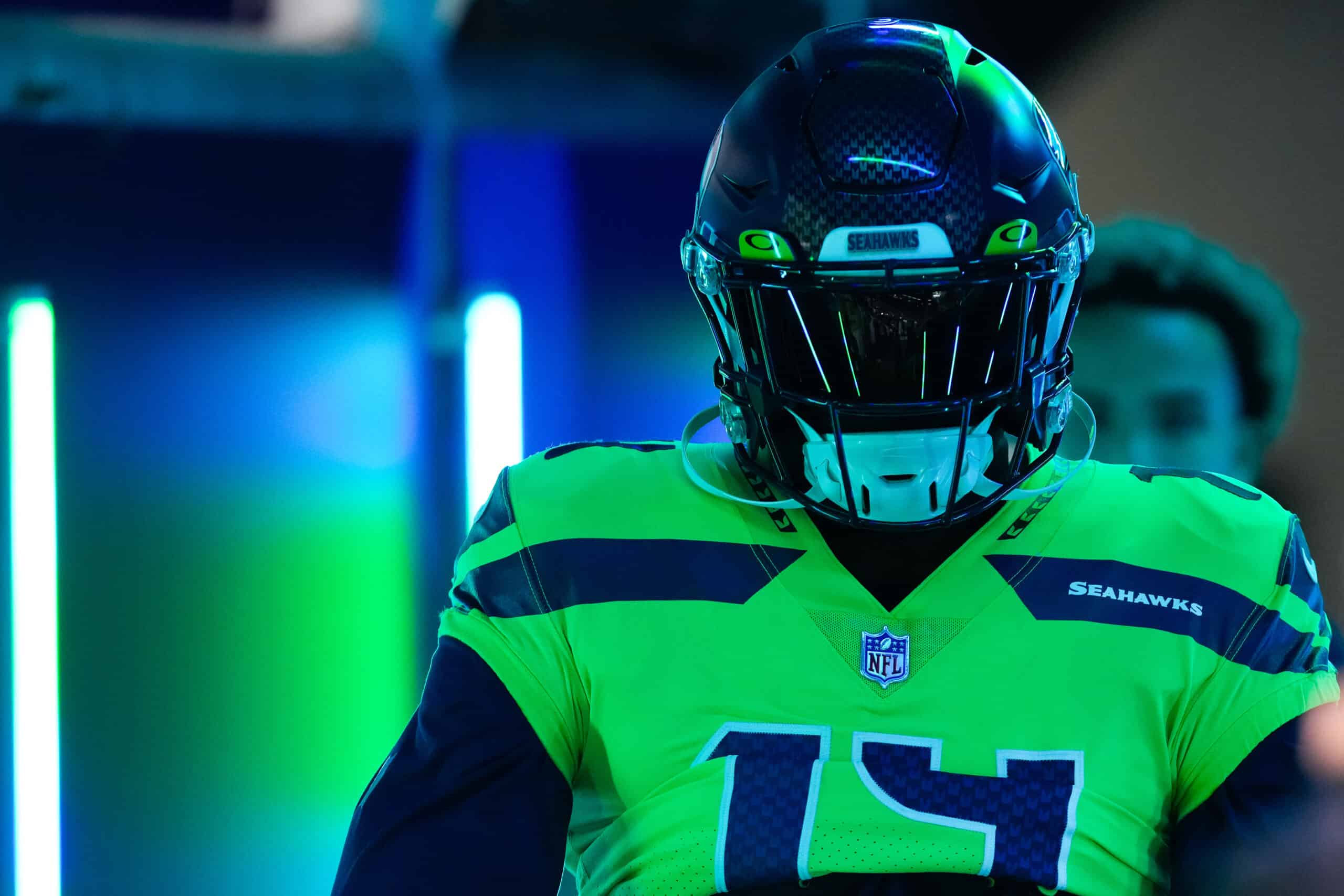
A lateral pass comes with inherent risks and potential rewards. The most obvious risk is a turnover. If the lateral pass is not handled cleanly, the ball can be fumbled or intercepted, giving possession to the other team. This risk is amplified near the team’s own end zone, where a turnover could result in a defensive touchdown or safety.
However, the rewards of a successful lateral pass can be game-changing. A series of laterals could allow a player to break free for a long touchdown when typical forward progress has been halted. The element of surprise from a trick play lateral can catch the defense off guard. Laterals are most rewarding when the risk is worth the potential impact on the game. For example, trying a series of desperation laterals when already losing in the game’s final seconds contains minimal additional risk compared to the reward of pulling off a miraculous score.
Coaches must weigh risks versus rewards when dialing up trick lateral plays. The farther a team is from its own end zone, the more a coach may be willing to accept the risk. Up by multiple scores late in a game, a coach has less to lose by trying a lateral play. Overall, understanding risk versus reward scenarios is key to smart utilization of the lateral pass.
Famous Lateral Pass Failures
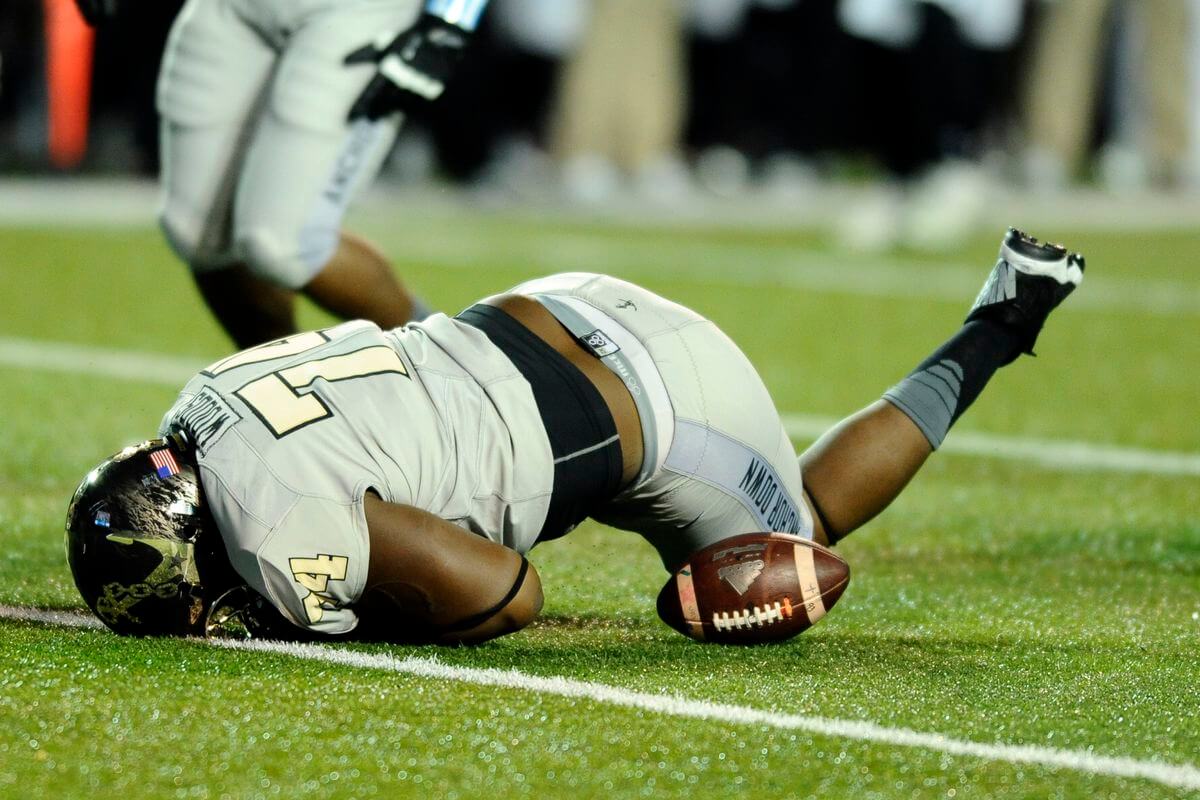
Some of the most memorable failures involving the lateral pass have occurred at the professional and collegiate level. These botched attempts often decide major games between bitter rivals.
One infamous NFL example is the New York Jets vs. New England Patriots game on November 25, 2012, dubbed the “Butt Fumble Game.” Late in the 4th quarter with the Patriots leading 49-19, Jets QB Mark Sanchez collided with his own lineman and fumbled the ball. The Patriots recovered and scored another touchdown. In a last ditch effort, the Jets attempted a series of laterals on the ensuing kickoff return which resulted in a fumble and another Patriots touchdown as time expired. This game marked the low point of dysfunction for the Jets franchise.
At the collegiate level, the Iron Bowl rivalry game between Alabama and Auburn featured a critical lateral pass failure. On November 30, 2013, with Auburn trailing 28-21, CB Chris Davis returned a missed Alabama field goal over 100 yards for the game-winning touchdown on a play known simply as “Kick Six.” Alabama attempted multiple laterals in vain trying to stop Davis’ progress downfield. This defeat knocked Alabama out of the SEC and national championship picture.
These examples underscore how a failed lateral pass can turn the tide of a game, especially late. The risk can be worth the reward but proper execution is critical. A lateral gone wrong can go down in history as a famous flub that devastates the team and its fans.
Coaching a Lateral Pass
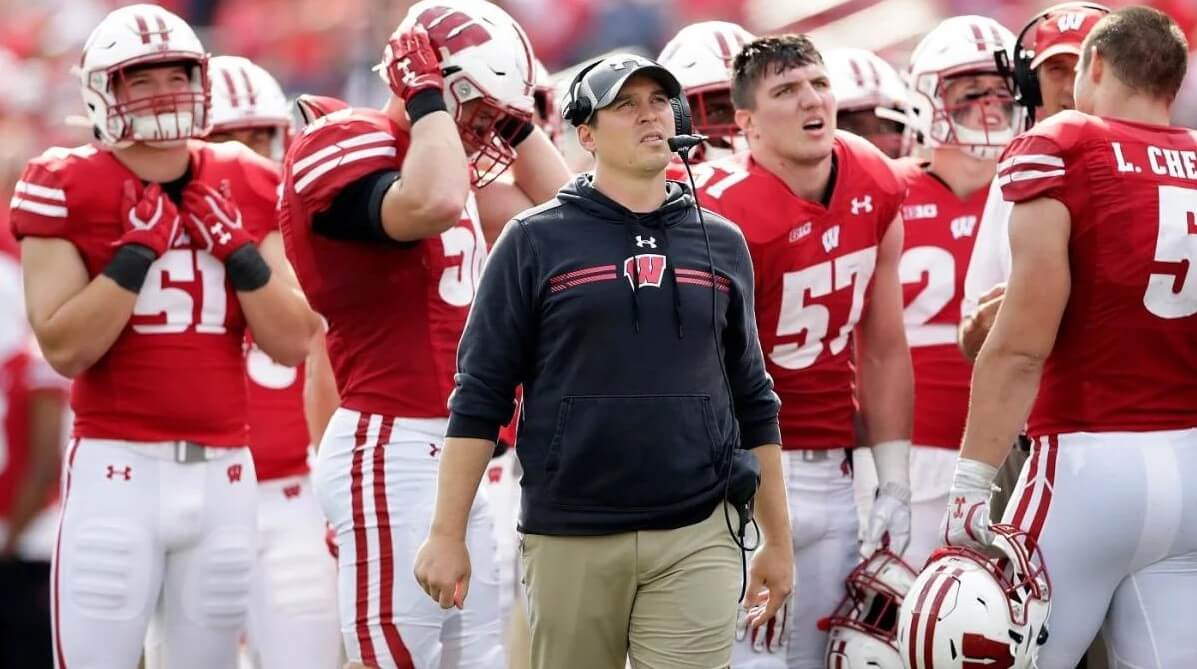
Teaching players how to properly execute a lateral pass requires patience and repetition.
Here are some tips for coaches on developing solid lateral pass skills:
Master the fundamentals
Start by having players get comfortable tossing the ball back and forth to each other. Focus on proper hand positioning – thumbs together on the laces, fingers spread wide across the sides. Players should step towards their target and deliver the ball with a firm flick of the wrist. Stress extending the arms fully and following through.
Practice tossing on the move
Once players are comfortable making static passes, begin lateral drills on the move. Set up lines and have players shuffle downfield, tossing the ball back and forth to keep it moving. Cue them to pass before the defense arrives and to keep eyes upfield. Defenders can be added to apply pressure.
Run game simulations
Incorporate lateral passes into offensive play simulations. Run through team playcalls that include laterals like pitches, handoffs, and hook and ladder plays. Position specific drills can also be useful – have running backs and receivers run through routes that require working a lateral into the play.
Focus on communication
Running effective laterals requires timing, chemistry and communication between teammates. Have players work on clear hand signals and exchange verbal cues so they know when a lateral is coming. Calling out “Lateral!” is common. Eye contact and awareness of surroundings is key.
Practice makes perfect
As with any technique, the more you rep lateral passes, the better players will become. Dedicate time each practice to lateral drills and involve the entire team. Turning it into a fun competition can keep players engaged too. Proper lateral passing takes commitment, but pays off on the field.
Lateral Pass Strategies

The effectiveness of incorporating lateral passes into a game plan depends on several factors. Coaches must weigh the risks versus rewards and decide when is the right time to attempt these unconventional plays.
In general, lateral passes work best when the defense is not expecting them or is out of position. The surprise element gives the offense an advantage.
Common situations where laterals can be effective include:
- After a long reception or interception return, when the defense is chasing the ball carrier from behind. A well-executed lateral or series of laterals might result in a touchdown.
- On the final play of a half or game, when the offense needs a touchdown to tie or take the lead. The risk of a turnover is less costly in this situation.
- When the defense appears tired or unfocused. Defenders may be a step slow reacting to the lateral.
- On trick plays from uncommon formations when defenders are out of position.
The timing and execution must be flawless for lateral passes to work. Offensive players must be on the same page and prepared to immediately lateral the ball. Quarterbacks and coaches should identify which players are best suited to catch and pass laterals.
Frequent practices are needed to build chemistry and precision. Coaches might install just a few specific lateral plays versus making them a core part of the offensive game plan. Ultimately the risk-reward calculation depends on the game situation and the team’s confidence in executing the unconventional play.
Conclusion
Lateral passes are an exciting part of the game of football, allowing teams to keep plays alive with creativity and deception. In summary, a lateral pass is when the ball is passed backwards or sideways by the ball carrier to a teammate behind the line of scrimmage. Lateral passes are high risk, high reward plays, as they can lead to big gains but also turnovers if not executed properly.
Some famous lateral plays like the Cal-Stanford play demonstrate how game-changing these unconventional passes can be. Coaches work on perfecting lateral technique in practice to give their teams an unexpected edge. Overall, the lateral pass requires timing, precision, and awareness from the entire offensive unit. When done well, it shows off football as a true team sport.
The element of surprise and added yards from laterals make for thrilling moments. While they can easily backfire, lateral passes showcase football as a game of risks and ballsy moves. This unique tool in the offensive arsenal keeps fans on their toes during intense matchups. For these reasons, the lateral pass remains an electrifying maneuver that brings excitement to the sport of football.


